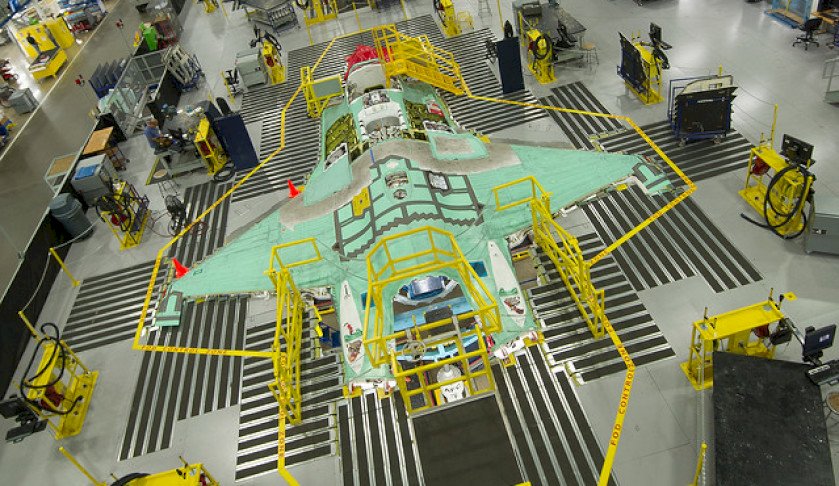 The Assistant Secretary of the US Air Force for Acquisition, Technology and Logistics, Dr Will Roper, has used his address to the Virtual Air, Space and Cyber conference to outline an agile, digital-focused acquisition model for new capabilities, writes Stephen Kuper.
The Assistant Secretary of the US Air Force for Acquisition, Technology and Logistics, Dr Will Roper, has used his address to the Virtual Air, Space and Cyber conference to outline an agile, digital-focused acquisition model for new capabilities, writes Stephen Kuper.
During his Matrix-inspired virtual keynote, Dr Roper discussed the accomplishments and the future of acquisition for the Department of the Air Force while calling for disruptive agility in order to remain competitive in an ever-innovating global security environment.
With service branch leaders – Chief of Staff of the Air Force General Charles Brown jnr and Chief of Space Operations General John Raymond – making it clear that the Air and Space Forces must accelerate change to win, Dr Roper explained that acquisitions must also evolve, so services can be ready for whatever comes its way – whether it be something like artificial intelligence, ever-present drones, gene editing or human augmentation.
Dr Roper explained, “If you look at the world in which we live today, we must be agile. There are too many possible futures for us to pick one and build a force that’s geared to defeat it.
“There’s no telling what the future can hold. We have to do our part in acquisition and that means being able to develop war-winning systems at a pace that today’s technology, trends and threats require,” Dr Roper explained.
With the use of digital engineering, Dr Roper said the Air and Space Forces can build unique systems in an environment where unique technology is always being redesigned, optimised and tested digitally, as opposed to using blueprints or computer models “that were good approximations for the physical system, but not the same as the real thing”.
Dr Roper likened the use of digital engineering to that of the movie, The Matrix. he explained that with digital engineering, members can learn within an environment where the digital reality is so real, then ‘wake up’ in the real world with that acquired knowledge and less resources spent.
“The more amazing commercial technology becomes, the more amazing our military technology is going to have to be to overcome the advantages that are available to all. The last area that we have to have strategic agility is in being able to computerise or virtualise everything about our development and production, assembly, even sustainment of systems, so that we can finally get past the tyranny of the real world and take learning and feedback into the digital one,” Dr Roper added.
The Air Force has already prescribed to Dr Roper’s idea of the future of design and production. It recently announced its new designator, the eSeries, which includes aircraft – such as the eT-7A Red Hawk – satellites and more that are digitally engineered.
According to Dr Roper, the ability to build an airplane the first time as if it were built 100 times, will open up a paradigm shift for the Air Force and the Space Force. He said that with digital engineering, the learning curve, integration and flying before buying can be a thing of the past if the services choose for it to be so.
It is not just limited to the computer screen or training aircraft, but it has already allowed the Air Force to design, assemble, test and fly its Next Generation Air Dominance aircraft (NGAD) in record time.
“NGAD has come so far that the full-scale flight demonstrator has already flown in the physical world and it’s broken a lot of records in the doing,” Dr Roper said.
In order to accelerate change today and ensure maximum agility on future battlefields, the Air and Space Forces must wake up to a new reality where aircraft, weapons and satellites already exist in an exact digital reality before metal is ever cut.
Dr Roper added, “Digital engineering isn’t a fluke … It is our future. This is how we provide our forces the capabilities they’ll need to win on the unpredictable, rapidly evolving innovation battlefield in this century by fundamentally changing how we build and acquire systems and with whom we build them, so that no matter what our adversaries do in the future, we will have the agility to overmatch and win. Then we will innovate faster, we will adapt quicker and ultimately stay ahead to disrupt and win.”
Further to these points, Dr Roper noted that to achieve the required agility and speed, the Air and Space Forces must embrace the full potential of the US tech ecosystem, and become a dual-use Air and Space Force that regularly employs cutting-edge commercial solutions. Expanding these partnerships while sending a clear, consistent signal to industry on the department’s new approach is imperative.












